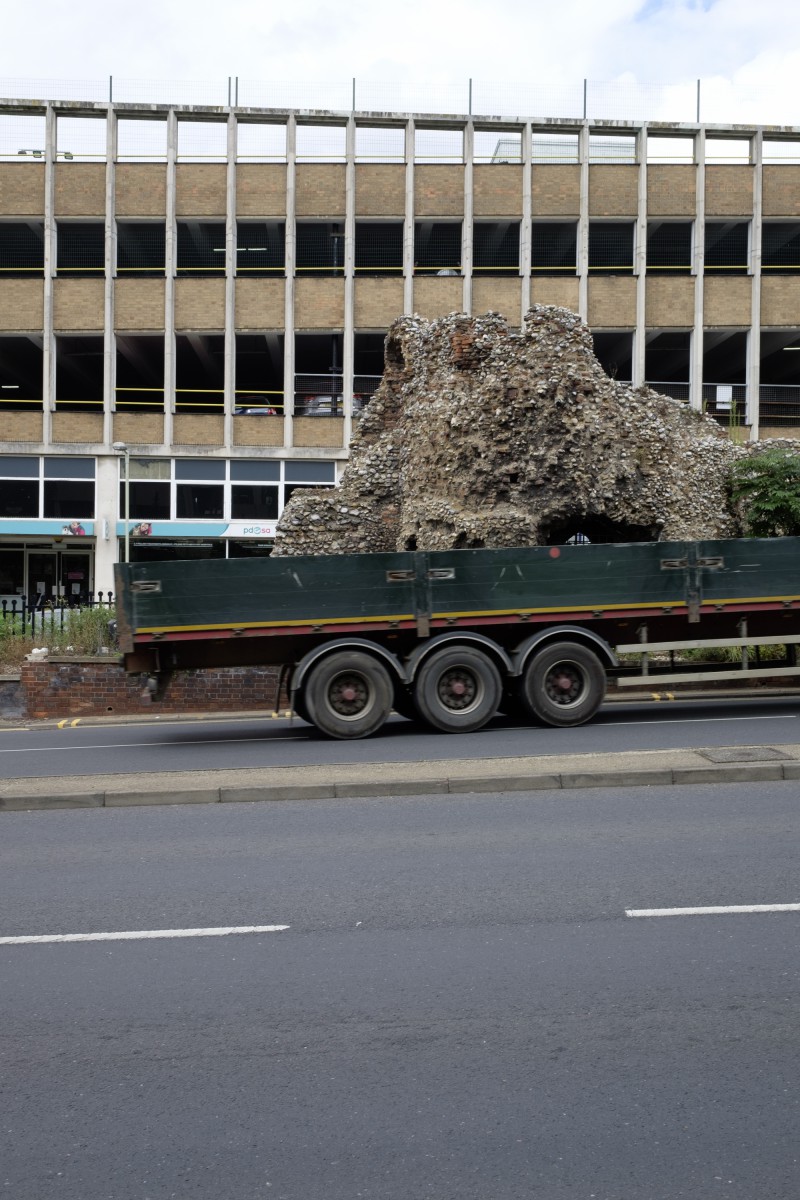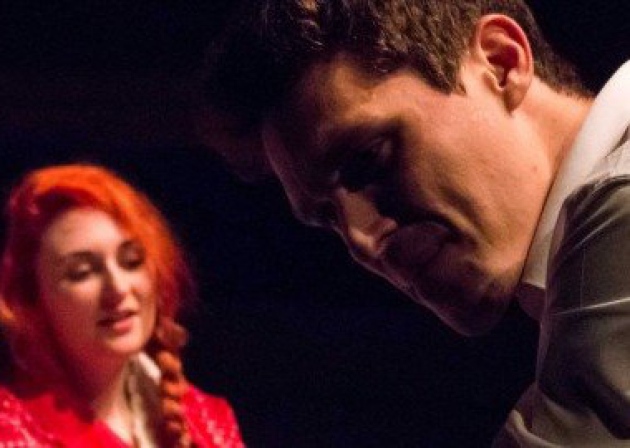Timed to coincide with the opening of a small exhibition at Norwich Castle, this walk around a section of Norwich’s city walls took an idiosyncratic look at its subject.
‘Guide’ Jonathan P. Watts opened the walk by disarmingly declaring that he doesn’t know much about the history of the walls, and that he would be ill-equipped to answer any questions on them. Instead, the perambulation was an audio version of his essay Plunkett’s Paradox, written to accompany artists Glen Jamieson and Rob Filby show.
That, in turn, was inspired by the work of local photographer George Plunkett, whose photographic archive includes several pictures of the wall in the 1930s as well as hundreds more of the wider city.
The exhibition itself consists of a display of Risograph-printed limited-edition books with detailed, careful panoramic photos of the remaining parts of the wall, paired with a changing selection of digital prints at sites marked on Plunkett’s 1938 map of the structures.
The digital prints are offensively poor as pictures of the wall – with the masonry hidden by delivery trucks and other objects. On the other hand, this counter-intuitive approach emphasises the real life experience of them, and their original purposes as practical, commercial, administrative, and defensive structures. They weren’t built to be looked at.
Watts seeked to link Plunkett with Parisian photographer Eugène Atget, and espoused a theory of photographs being like “crime scene photos” – backwards looking documents with the events removed. While not entirely convincing, the commentary did offer an opportunity to take a different look at how we consider documentary photography, and the seemingly familiar world around us.
- The Wall Existing exhibition continues at Norwich Castle Museum and Art Gallery until January 14, 2024.

